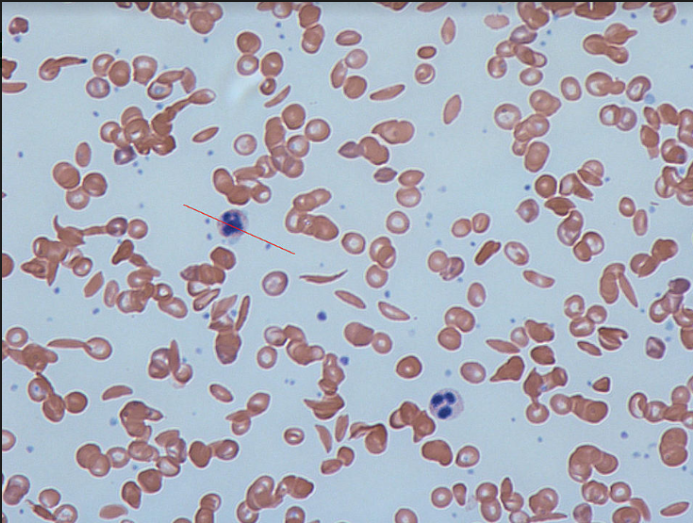Medical researchers and scientists have recently made significant strides in finding a cure for sickle cell anemia in the U.S.
This blood disorder is caused by a genetic mutation that affects the shape of red blood cells, leading to severe pain and organ damage.
This disease affects millions of people worldwide and has a significant impact on both the individuals living with the disease and the healthcare systems that provide treatment.
“This condition affects more than 100,000 people in the United States and 20 million people worldwide,” states the National Institute of Health.
According to the FDA, they have approved a new gene-editing tool called CRISPR-Cas9 for breakthrough research that focuses on using gene therapy.
“CRISPR/Cas9 can be directed to cut DNA in targeted areas, enabling the ability to accurately edit (remove, add, or replace) DNA where it was cut.”
This tool allows scientists to modify the faulty gene responsible for sickle cell anemia. As a result, the red blood cells can regain their normal shape and function, potentially offering a permanent cure for those affected and hope for a stable solution to this chronic disease.
The recent breakthrough in gene therapy for sickle cell anemia is significant because it offers a permanent cure for a disease that currently has limited treatment options.
Current treatments for sickle cell anemia focus on managing symptoms and preventing complications, but they do not address the underlying cause of the disease.
Gene therapy, on the other hand, targets the faulty gene responsible for the disease and replaces it with a healthy gene.
This can be achieved through various methods, including using modified viruses to deliver the corrected genes or directly injecting the genes into the affected cells.
By introducing healthy genes, gene therapy aims to restore the normal function of red blood cells and alleviate the symptoms associated with sickle cell anemia.
Unlike traditional treatments that only provide temporary relief, gene therapy has the potential to offer a long-lasting solution and significantly improve the quality of life for individuals living with this condition.
While gene therapy shows promise for treating sickle cell anemia, there are important considerations to keep in mind.
One major concern is the cost of the treatment. The Vertex-CRISPR therapy shows the list price, which currently stands at $2.2 million per person. This high cost makes the therapy inaccessible to many individuals who could benefit from it.
Additionally, the use of gene editing technology, such as CRISPR-Cas9, raises ethical concerns; for example, the CRISPR-Cas9 system is still relatively new, and there is limited data on its long-term effects.
The ability to modify genes opens up possibilities for altering human traits and characteristics beyond medical necessity, raising questions about the potential misuse and unintended consequences of this technology.
“Because one of the questions with CRISPR is, is it safe? In this case, it’s making a little cut in the DNA,” said Gina Kolata, a New York Times reporter who focuses on science and medicine. “And the issue is, how do you know it was cut in the right place and that it didn’t start cutting somewhere else too? How do you know you aren’t disrupting another gene that might cause cancer, for example?”
But even though we have many concerns to work through, the knowledge gained from treating sickle cell anemia can contribute to advancements in gene therapy techniques and improve the overall understanding of genetic diseases.
The impact of finding a cure for sickle cell anemia extends beyond immediate relief for those affected, shaping the future of genetic medicine.








